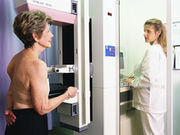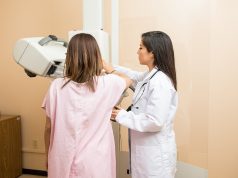Effect attenuated in women living in areas with lower educational levels; negligible for Hispanic women
THURSDAY, Jan. 18, 2018 (HealthDay News) — The elimination of cost sharing for screening mammography is associated with increased rates of use of the service, according to a study published in the Jan. 18 issue of the New England Journal of Medicine.
Amal N. Trivedi, M.D., M.P.H., from the Brown University School of Public Health in Providence, R.I., and colleagues conducted a difference-in-differences study of biennial screening mammography. Data were included for 15,085 women aged 65 to 74 years in 24 Medicare Advantage plans that eliminated cost sharing and 52,035 women in 48 matched control plans that maintained full coverage.
The researchers found that the adjusted rates of biennial screening mammography increased from 59.9 to 65.4 percent in the two-year periods before and after elimination of cost sharing. The rates of biennial mammography were 73.1 and 72.8 percent during the same periods in control plans, yielding a difference in differences of 5.7 percentage points. Among women living in the areas with the highest quartile of educational attainment versus those living in the lowest quartile, the difference in differences was 9.8 versus 4.3 percentage points. After elimination of cost sharing, the rate of biennial mammography increased by 6.5 (95 percent confidence interval, 3.7 to 9.4), 8.4 (95 percent confidence interval, 2.5 to 14.4), and 0.4 (95 percent confidence interval, −7.3 to 8.1) percentage points for white, black, and Hispanic women, respectively.
“The elimination of cost sharing for screening mammography under the Affordable Care Act was associated with an increase in rates of use of this service among older women for whom screening is recommended,” the authors write.
Copyright © 2018 HealthDay. All rights reserved.








